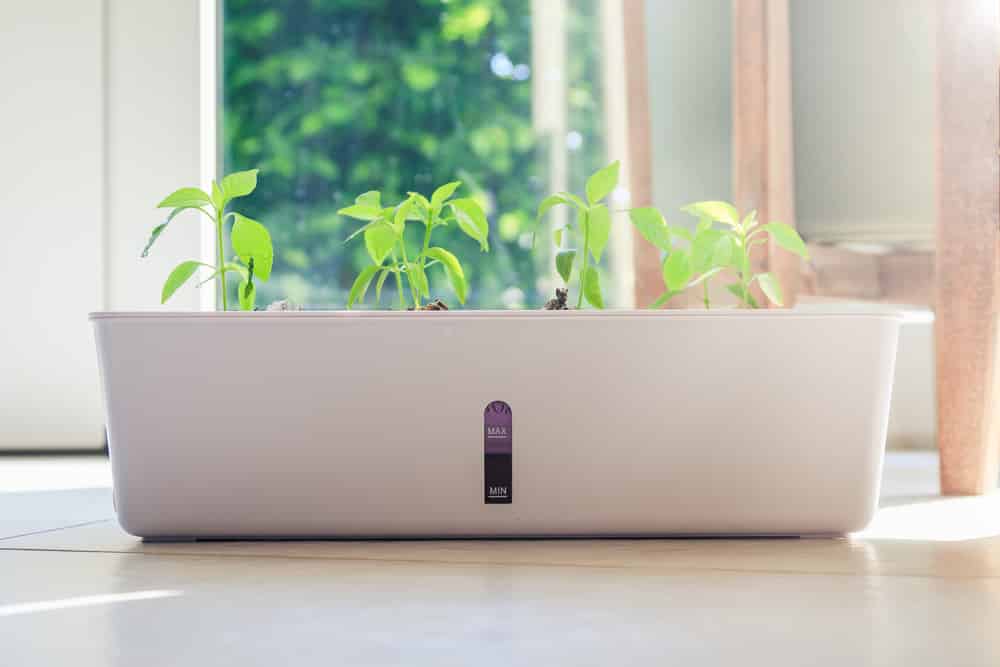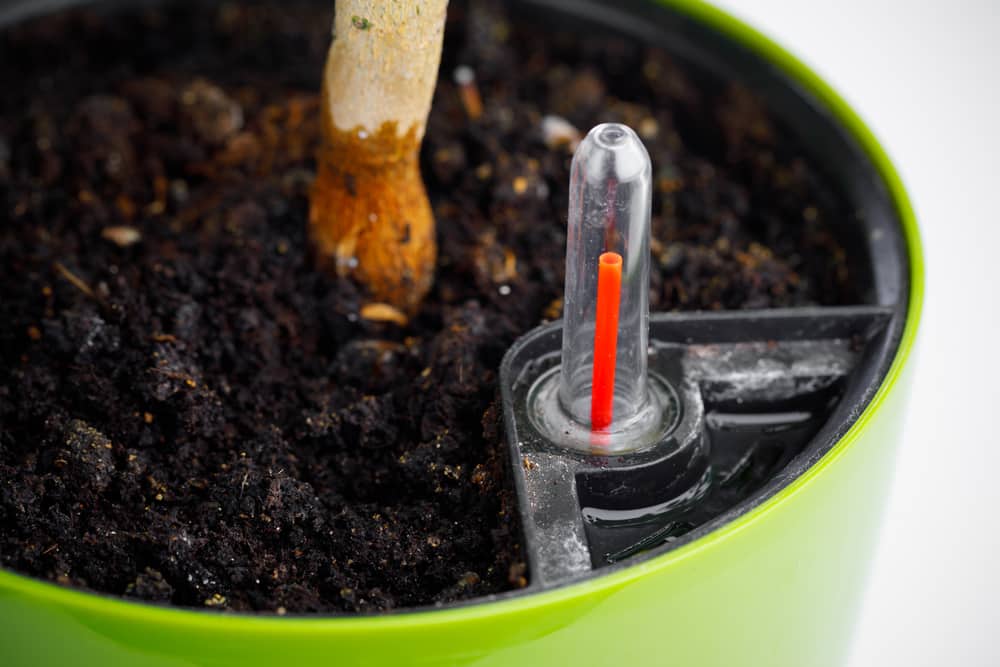Self-watering pots are becoming more and more popular as they make it easier to care for houseplants. However, with that ever-present moisture comes the question, do self watering planters cause root rot?
Let’s take a look and find out more below.
Are Self-Watering Planters Good for Plants?

A plant container that automatically ‘waters’ your houseplant may sound too good to be true, but it’s real and widely available to buy.
Self watering pots, or self-watering planters work via a wick that connects two compartments together. One holds clean water while the other holds soil and the plant. All you need to do is fill the water reservoir, and forget about irrigation for the time being. The plant’s roots will get constantly fed with water through the wick, hence the term ‘self-watering’.
There’s a high chance that self-watering pots can cause root rot as the soil will be in a constantly moist state. This can spell bad news and good news at the same time, depending on the plant that’s in the container.
Also, self watering planters may not be the best idea for outdoor use and areas that get a high amount of rainfall. Excess water can enter the soil and cause it to become waterlogged, especially if there isn’t an overflow outlet in place. Furthermore, you will need to replace the water every few days to avoid stagnation and having it as a breeding ground for mosquitoes.
Ideally, you’ll want to put moisture-loving plants such as ferns, coleus, mint, peace lilies, and even spinach or lettuce in your self watering pot to maximize the wicking system and so you won’t have to worry about the soil going dry and killing the plant. Aside from this, you will need to meet the plant’s light requirements as well.
How to Prevent Root Rot in Self-Watering Pots?
Keep the Pot Inside
Indoors is the best spot for a self-watering pot. Houseplants tend to do well inside the house and on window sills as they’re protected against the outside elements. To prevent additional water, such as rain and humidity from entering the water compartment then it’s recommended that you bring your plant and pot inside.
Change the Water Regularly
Self-watering pots may be automated but there’s a maintenance aspect you should follow. It’s important that you keep the water clean and fresh to reduce the chances of root rot. If possible, clean out the water compartment weekly and throw out leftover water before refilling it.
Choose the Right Plants
Lastly, you should only put the right plant in self-watering pots to make it work. Plants that need to have their soil dry out completely now and then are not compatible with these kinds of containers. The same goes for plants that have shallow roots, such as cacti, succulents, and the snake plant, for example.
Do Self-Watering Pots Drown Plants?
Self watering planters do not drown plants, as their wicking mechanism is designed to feed the roots slowly and over a sustained period of time.
While it’s true that these containers take out the guesswork in watering, there’s also a chance that your plant might be getting too much. Signs include yellowing of leaves, curling, and a droopy appearance associated with root rot.
Self-watering planters are great for vegetables since it provides a consistent level of moisture. All you need is to provide adequate sunlight and you can just sit back and watch as the healthy plants produce yields every harvest time. Vegetables have a lower risk of drowning since they need constant moisture in their growing media.
How Long Does a Self Watering Planter Work?
The exact answer to ‘how long will a self-watering planter last?’ will depend on several factors, such as the size of the water reservoir, the kind of plant, and the environment.
Bigger water compartments tend to hold more, and therefore can last anywhere between 5 to 10 days. Also, the more vigorous the plant that’s in the self-watering pot, the faster the water tends to run out. Vegetables will need to have to be refilled constantly, but not so much for the other varieties.
Also, plants tend to drink more on hot days and during the summer season. You may need to refill your self-watering planter every 3-4 days to keep it topped up.
